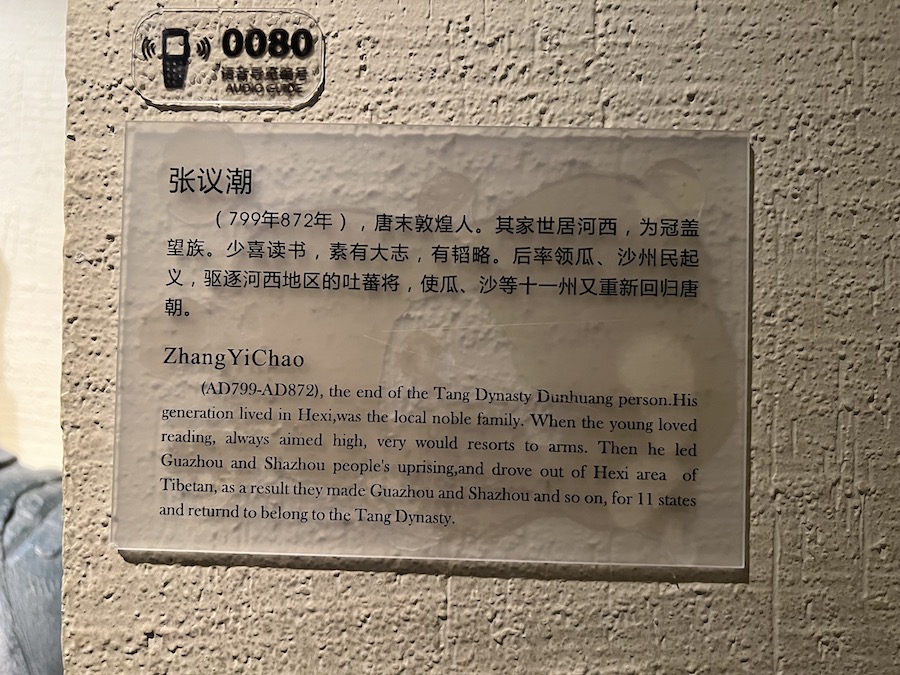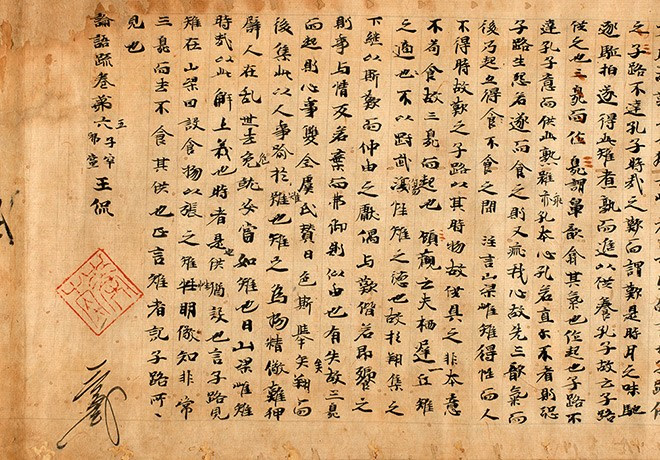Archive for Manuscripts
December 3, 2025 @ 6:32 pm· Filed by Victor Mair under Announcements, Books, Language and archeology, Literacy, Manuscripts
New book by Luke Waring:
Writing and Materiality in Ancient China: The Textual Culture of the Mawangdui Tombs (Columbia University Press, December 2025)
Read the rest of this entry »
Permalink
September 11, 2024 @ 11:32 am· Filed by Victor Mair under Alphabets, Decipherment, Language and technology, Manuscripts, Writing
Perhaps as early as 1640, decipherers have tried practically everything to decode the maddeningly frustrating Voynich manuscript. So far it has resisted all efforts to identify the language in which it was presumably written. About the only way to make further progress in cracking the code is to apply some new technology. As described in the following reports, it seems that a type of digital enhancement has become available and been used to fill in some of the gaps in the manuscript.
The first is the primary document, "Multispectral Imaging and the Voynich Manuscript", which appears on Lisa Fagin Davis' blog, Manuscript Road Trip (9/8/24). She begins with an explanation of what the technology consists of.
Read the rest of this entry »
Permalink
August 31, 2024 @ 5:21 pm· Filed by Victor Mair under Language and history, Language and kinship, Language and politics, Manuscripts, Philology
Sino-Platonic Papers is pleased to announce the publication of its three-hundred-and-fifty-sixth issue: “The Tang as a Tuoba Dynasty” (pdf) by Sanping Chen.
ABSTRACT
By examining the record of a local anti-Tibetan rebellion in document scroll S.1438 from the Dunhuang “library cave,” this discussion demonstrates that the nomadic Tuoba origin of the Tang royal house was known not only to the ancient Turkic people, as shown by their name for the Tang, Tabγač, but also to the Tang subjects themselves. In addition to substantiating Paul Pelliot’s old assertion that the Old Turkic name Tabγač came from the name Tuoba, this work argues that the Tang dynasty was in many aspects indeed the continuation of its Tuoba predecessors.
Read the rest of this entry »
Permalink
August 31, 2024 @ 4:30 am· Filed by Victor Mair under Announcements, Books, Language and history, Language and religion, Language and society, Manuscripts, Vernacular
Just published is a volume edited by David Holm, Vernacular Chinese-Character Manuscripts from East and Southeast Asia (De Gruyter), in their Studies in Manuscript Cultures series.
The book has chapters on Hokkien, Cantonese, Vietnamese, Yao, Zhuang, and other Tai-speakers who use Chinese-based vernacular scripts.
Previously announced on Language Log
here.
Read the rest of this entry »
Permalink
April 21, 2024 @ 6:20 am· Filed by Victor Mair under Books, Decipherment, Gender, Language and astronomy, Language and medicine, Manuscripts
This is one of the most novel theories on the Voynich manuscript (Beinecke MS408; early 15th c.) that I've ever encountered, and there are many.
The Voynich Manuscript, Dr Johannes Hartlieb and the Encipherment of Women’s Secrets, by Keagan Brewer and Michelle L Lewis, Social History of Medicine, hkad099 (22 March 2024)
Keywords: Voynich manuscript, Dr Johannes Hartlieb, women’s secrets, sex, gynaecology

A floral illustration on page 32
Read the rest of this entry »
Permalink
March 13, 2024 @ 5:57 am· Filed by Victor Mair under Announcements, Books, Language and religion, Language and society, Manuscripts
Forthcoming from De Gruyter, July 14, 2024 (ISBN: 9783111382746):
Vernacular Chinese-Character Manuscripts from East and Southeast Asia, edited by: David Holm.
Volume 40 in the series Studies in Manuscript Cultures
Keywords: Asia; vernacular; ritual; library collections; recitation
Topics: Asian Literature; Asian and Pacific Studies; Dialectology; Linguistics and Semiotics; Literary Studies; Literature of other Nations and Languages; Southeast Asia; Textual Scholarship; Theoretical Frameworks and Disciplines
Read the rest of this entry »
Permalink
July 17, 2023 @ 9:34 pm· Filed by Victor Mair under Language and art, Lost in translation, Manuscripts
Bilingual label for a wall painting at the Mogao Caves in Dunhuang, Gansu, China:

Read the rest of this entry »
Permalink
February 27, 2023 @ 12:49 pm· Filed by Victor Mair under Language and literature, Manuscripts, Punctuation, Topolects
Let us begin this post with a brief introduction to the 16th-century Hokkien (Minnan) drama, Tale of the Lychee Mirror:
(source)
Read the rest of this entry »
Permalink
December 25, 2020 @ 9:37 am· Filed by Victor Mair under Language and culture, Language and economics, Language and history, Language and literature, Language and religion, Manuscripts, Philology
[This is a guest post by Diana Shuheng Zhang. It was prompted by "'Involution', 'working man', and 'Versailles literature': memes of embitterment" (12/23/20), where we discovered that the word "involution", which is little known in English-speaking countries, except in highly specialized contexts, has gone viral in China in a sense that is barely known in the West.]
The resource curse of Chinese textualism and Sinology's paradox of involuted plenty
I. Hyperabundance of texts
To me, the predicament of Sinology seems like a resource curse. The "paradox of plenty”. “Paradox of plenty” is an economic term, referring to the paradox that countries with an abundance of natural resources tend to have worse development outcomes than those with fewer natural resources. I have been thinking about this in my head for a few days. The “resource curse” for China studies is that Chinese culture, especially Classical Chinese-based culture of writings, has too many raw texts. The discovery of the Dunhuang manuscripts has added even more to the already abundant, if not excessive, textual residue that scholars devote their lives to, accumulating and laying out textual evidence before they can reach the point — maybe they never can if they do not intend to — of analyzing, integrating, utilizing, and theorizing them.
Read the rest of this entry »
Permalink
October 2, 2020 @ 8:49 pm· Filed by Victor Mair under Manuscripts, Philology
Article by Eiichi Miyashiro in The Asahi Shimbun (9/27/20):
"Oldest writing about teachings of Confucius found in Japan"

The manuscript of a compilation of commentaries on Confucian teachings produced by Chinese scholar Huan Kan (488-545) bears a mark suggesting ownership by the Fujiwara clan. (Provided by Keio University)
Read the rest of this entry »
Permalink
November 1, 2019 @ 6:43 am· Filed by Victor Mair under Language and literature, Lexicon and lexicography, Manuscripts, Philology, Semantics
[This is a guest post by Nicholas Morrow Williams]
Victor recently pointed out to me the appearance of Martin Kern’s important article in the latest issue of Early China on “Xi Shuai” 蟋蟀 (“Cricket”) and Its Consequences: Issues in Early Chinese Poetry and Textual Studies” (Early China 42 [2019]: 39–74). Kern’s article offers both a very detailed examination of the poem “Cricket” contained in a Tsinghua manuscript, which differs substantially from the comparable poem in the Shijing 詩經, and also reflections on the broader significance of the manuscript for “textual studies.”
The article is well worth reading both the recently-discovered poem and for the broader reflections, but I would like to discuss one issue to which it does not devote so much attention, which is the interpretation of the received text of “Cricket” in the Shijing itself. After comparing the excavated and received texts, Kern concludes:
Read the rest of this entry »
Permalink
October 10, 2019 @ 12:49 pm· Filed by Victor Mair under Decipherment, Manuscripts
[This is a guest post by J.W. Brewer]
Among the courses available to Yale undergraduates this fall semester is the one whose description I've cut and pasted below. It's taught by Prof. Claire Bowern. I can't recall anything quite like this offered in the department when I was an undergraduate major way back in the 1980's, but a) using an interesting-sounding controversy that outsiders may have heard of to draw them into the discipline is maybe a good outreach strategy; and b) at least some of the then-current Chomskyan doctrine covered in a syntax class I took with Larry Horn is apparently no longer believed by anyone (Chomskyans included) and is perhaps in hindsight now in the same class of theory as some of the more fanciful interpretations of the Voynich MS.
Read the rest of this entry »
Permalink
May 16, 2019 @ 10:41 am· Filed by Victor Mair under Decipherment, Historical linguistics, Linguistics in the news, Manuscripts
Since high school, the Voynich manuscript is something that I have puzzled over from time to time. What language and script is it written in? What's it about? Although no one has been able to read the manuscript since Wilfrid Voynich, the Polish–Samogitian bibliophile and book dealer first brought it to light more than a century ago, the evocative illustrations and mysteries swirling around it have led to many fruitless attempts at decipherment.
Now a British academic (in Journal of Romance Studies) declares that it was a manual for nuns written in unencrypted proto-Romance:
"Bristol academic cracks Voynich code, solving century-old mystery of medieval text", University of Bristol (May 15, 2019).
A University of Bristol academic has succeeded where countless cryptographers, linguistics scholars and computer programs have failed—by cracking the code of the 'world's most mysterious text', the Voynich manuscript.
Although the purpose and meaning of the manuscript had eluded scholars for over a century, it took Research Associate Dr. Gerard Cheshire two weeks, using a combination of lateral thinking and ingenuity, to identify the language and writing system of the famously inscrutable document.
Read the rest of this entry »
Permalink


